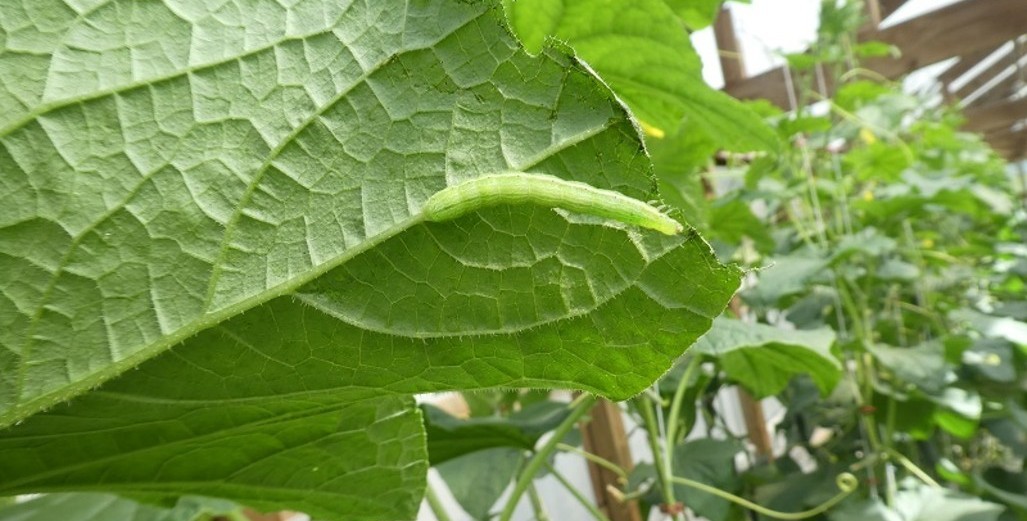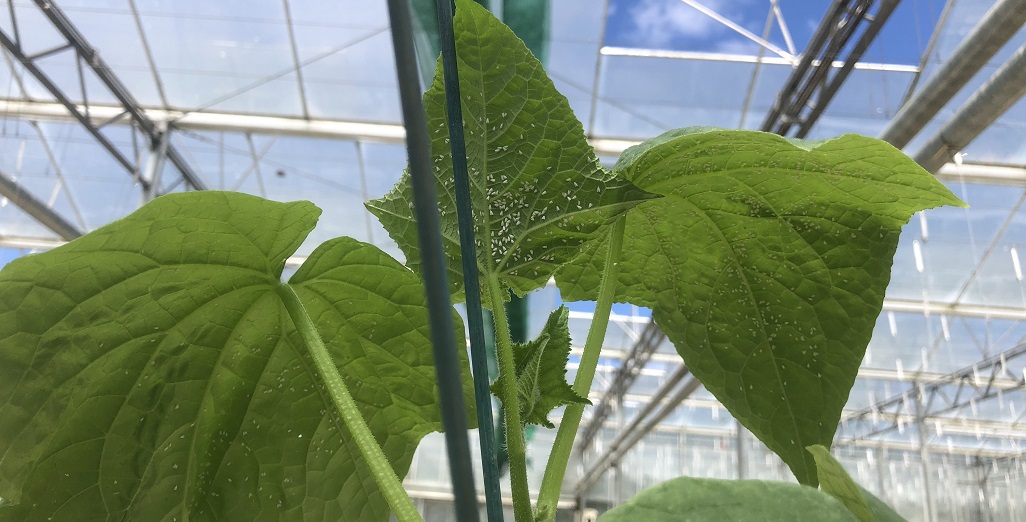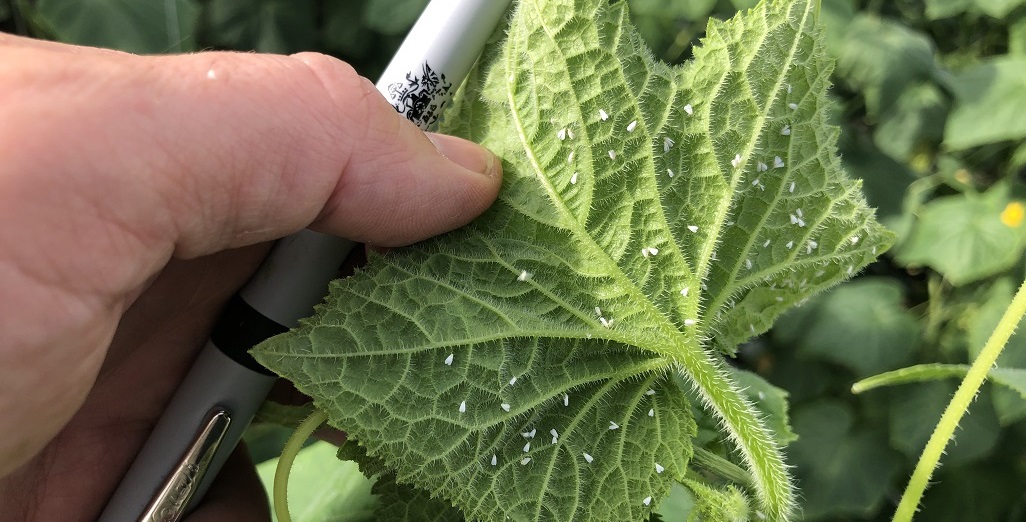Sign up here to subscribe to the Grower2grower Ezine. Every two weeks you will receive new articles, specific to the protected cropping industry, informing you of industry news and events straight to your inbox.
Feb 2019
Cabbage White Butterfly (Caterpillars)

BT’s give good control
Never a dull moment, last week it was thrips, this week it’s thrips and caterpillars. The caterpillar is a pest that is more annoying than crop destroying but if left unchecked will cause crop production losses. Never the less it should be dealt with. I was interested to see it attack the cucumber leaf in the cover photo. With tomatoes the caterpillar will eat leaves, burrow into fruit and eat through the main stem, generally at the top of the plant where the stem is still immature and soft.
Spraying, using a BT (Bacillus thuringiensis), is an option. I have always found the products available generally do a good job in supressing caterpillars. One thing to be careful of, if you are using old product, is that you check with your supplier if it will still be viable. I am expecting to come across the armyworm or cutworm caterpillars which come from moths. I have always found these caterpillars more difficult to eliminate.
The photo below is of a blue sticky trap, which I recently came across with a cabbage white butterfly attached. I was very surprised as I don’t often see this. Usually the cabbage white butterfly will land and lay its eggs on green foliage. The green canopy is perfect camouflage. I would be interested to know if growers, that use blue sticky traps, have seen many cabbage white butterflies caught on them?
Bacillus thuringiensis (Bt) is a natural occurring, soil-borne bacteria that has been used since the 1950s for natural insect control. It consists of a spore, which gives it persistence, and a protein crystal within the spore, which is toxic. That toxic protein differs, depending on the subspecies of Bt producing it, yielding a variance of Bt toxic to different insect species (or none at all). When the bacteria is consumed by certain insects, the toxic crystal is released in the insect’s highly alkaline gut, blocking the system which protects the pest’s stomach from its own digestive juices. The stomach is penetrated, and the insect dies by poisoning from the stomach contents and the spores themselves. This same mechanism is what makes Bt harmless to birds, fish and mammals whose acidic gut conditions negate the bacteria’s effect.
I appreciate your comments. Please feel free to comment below or on the grower2grower Facebook page:
https://www.facebook.com/StefanGrower2grower/
Article Written by Stefan Vogrincic, Consultant, Grower2Grower
Article Edited by Marie Vogrincic, Editor, Grower2Grower
CLASSIFIED
Subscribe to our E-Zine
More
From This Category

Starting on the back foot

(Best of 2023) RNA-based disease control in protected cropping environments. Anne Sawyer presents at the PCA Conference (Best new development PCA 2023)

(Best of 2023) Aphid infestation on cucumber crops

LimoMax, a new predator for insect control in greenhouses and outdoor crops.

Aphid infestation on cucumber crops

























